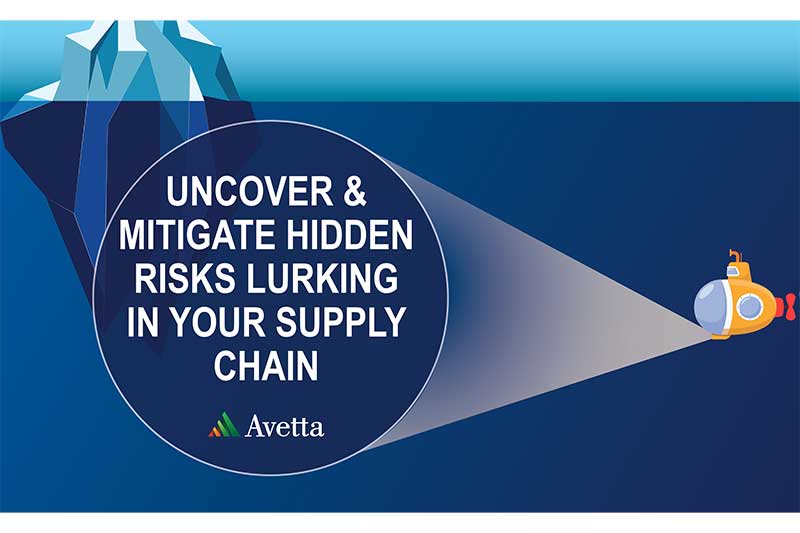Managing risks has become an enormous task for executives and senior leadership, given the speed of market change, the complexity of emerging events, and the increasing materiality of their impacts. Throughout 2024, business leaders will confront a diverse and complex barrage of challenging events, testing the strength of their operational resilience programs to preserve business integrity. Managing an ongoing cycle of supply chain disruptions continues to be a priority for organizations around the globe; supplier viability, compliance, cybercrime, and increasing ESG regulations are among a few of the concerns.
According to the 2023 Gartner Balancing Sustainability and Resilience Survey, over half of respondents reported facing disruptions in their supply chains for at least half of the time. Procurement managers must, therefore, focus on identifying and addressing these risks to ensure operational continuity. Procurement leaders must identify solutions to monitor, manage, and mitigate contractor and supplier risk. Between material and equipment shortages, shifts in demand, global uncertainties, and a lack of qualified labor, every industry faces its share of supply chain opposition and risks.
Recognizing all the risks within this modern supply chain ecosystem is difficult; multiple hidden risks lurking beneath the surface can pose significant challenges. This article discusses these hidden risks and effectively provides procurement leaders with actionable insights and strategies to mitigate them in the dynamic landscape.
Supplier Reliability: A Multi-Tiered Approach
Procurement leaders understand the importance of vetting primary contractors and suppliers for reliability and quality. However, the risks associated with secondary and tertiary suppliers are often overlooked in today’s interconnected supply chains. Disruptions in the operations of critical suppliers can have cascading effects throughout the supply chain, leading to delays and shortages.
To mitigate this risk, procurement leaders must conduct thorough due diligence on all levels of suppliers, identify alternative sources, and establish robust contingency plans to ensure continuity of operations.
Geographic Vulnerabilities: Managing Global Uncertainties
With the expansion of global trade, businesses are increasingly exposed to geographic vulnerabilities. Natural disasters, political instability, and regulatory changes in key regions can disrupt supply chain operations and impact business continuity.
Proactive measures to address geographic vulnerabilities are essential for safeguarding supply chain resilience. Leaders must monitor geopolitical developments closely, diversify their supplier base, and develop agile risk management strategies tailored to specific regions.
Cybersecurity Threats: Safeguarding Digital Assets
Supply chain cyberattacks continue to occur and are only growing. The digitalization of supply chain operations has brought unprecedented efficiencies and exposed businesses to cybersecurity threats. According to Gartner’s 2022 Thriving Amid Heightened Complexities Supply Chain Survey, 31% of respondents said they had experienced a cyberattack in the last 24 months that impacted supply chain operations. Cyberattacks targeting unprepared supply chain partners can compromise sensitive data, disrupt operations, and undermine trust.
Procurement leaders must prioritize cybersecurity measures, conduct regular risk assessments, and foster a culture of cyber awareness across the supply chain. Investments in cybersecurity resilience for your contractors and suppliers are paramount to safeguarding digital assets and maintaining supply chain integrity in the face of evolving cyber threats.
Ethical and Compliance Issues: Upholding Integrity
Ethical lapses and compliance violations within the supply chain can tarnish a company’s reputation and lead to legal and financial repercussions. Today, businesses are under increasing scrutiny to ensure ethical and responsible sourcing practices.
Procurement leaders must establish clear codes of conduct, regularly audit supply chain partners, and prioritize transparency and accountability. Procurement leaders can mitigate reputational risks and build trust with stakeholders by upholding integrity and compliance standards.
Financial Instability: Assessing Supplier Health
Financial instability among contractors and suppliers poses a significant risk to supply chain continuity. Economic uncertainties and market volatility underscore the importance of assessing supplier health and resilience.
Procurement leaders must conduct rigorous financial due diligence, monitor key financial indicators, and develop contingency plans to address potential disruptions. Proactive financial risk management is essential to mitigate supply chain disruptions and ensure business continuity in turbulent times.
Environmental Sustainability: Embracing Responsibility
Environmental sustainability considerations are increasingly shaping supply chain strategies. Climate change, resource scarcity, and regulatory pressures drive businesses to adopt eco-friendly practices and reduce environmental impacts.
Procurement leaders must prioritize sustainability initiatives and collaborate with suppliers to implement ESG and sustainability criteria into supplier selection processes. Embracing responsibility and sustainability is crucial to mitigate environmental risks and contribute to a more sustainable future.
In conclusion, procurement leaders are pivotal in identifying and mitigating hidden risks within the supply chain. In today’s dynamic landscape, these risks require proactive measures, strategic foresight, and agile risk management strategies. By staying vigilant and embracing innovation, professionals can navigate the complexities of the modern supply chain and ensure operational continuity. Leveraging advanced contractor risk management platforms like Avetta further enhances these efforts.
These supply chain risk management platforms streamline the process of vetting, monitoring, and managing contractors and suppliers, providing access to a network of prequalified suppliers and robust risk assessment tools. Integrating such platforms into the risk management framework empowers professionals to enhance efficiency, reduce costs, and strengthen overall supply chain resilience, ultimately enabling them to navigate uncertainties with greater agility and foresight.
SC
MR


More Risk Management
- Geopolitical readiness in supply chains: Strategic challenges for leaders
- Tariffs, taxes and trade: The impact of Trump’s reelection on the supply chain
- Cross-border transport 2024: Navigating the surge
- Benchmarking the complexity of ESG reporting
- Looking back at NextGen 2024
- The Corporate Sustainability Due Diligence Directive
- More Risk Management
Latest Podcast

 Explore
Explore
Procurement & Sourcing News
- Geopolitical readiness in supply chains: Strategic challenges for leaders
- With capacity to spare, logistics real estate demand remains subdued
- Tariffs, taxes and trade: The impact of Trump’s reelection on the supply chain
- How to improve demand forecasts for new product families
- Aggregators sitting on the throne of Africa’s e-commerce supply chains: What lessons can we learn?
- Cross-border transport 2024: Navigating the surge
- More Procurement & Sourcing
Latest Procurement & Sourcing Resources

Subscribe

Supply Chain Management Review delivers the best industry content.

Editors’ Picks




